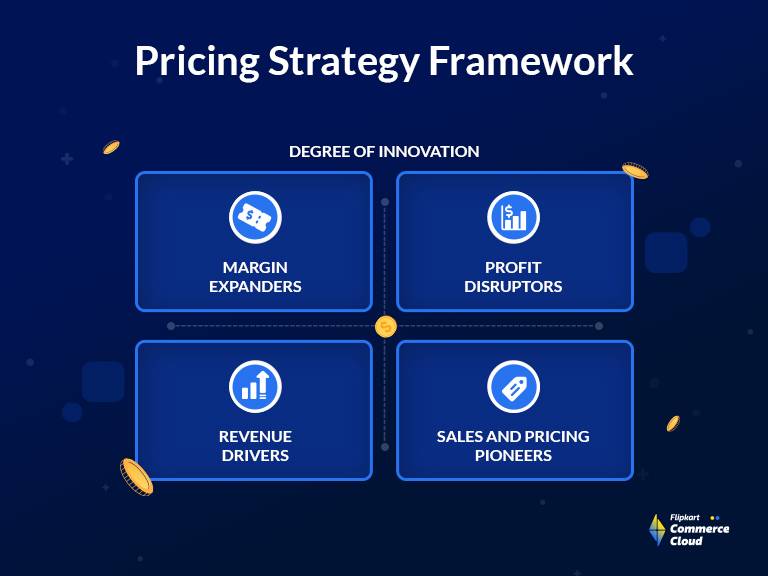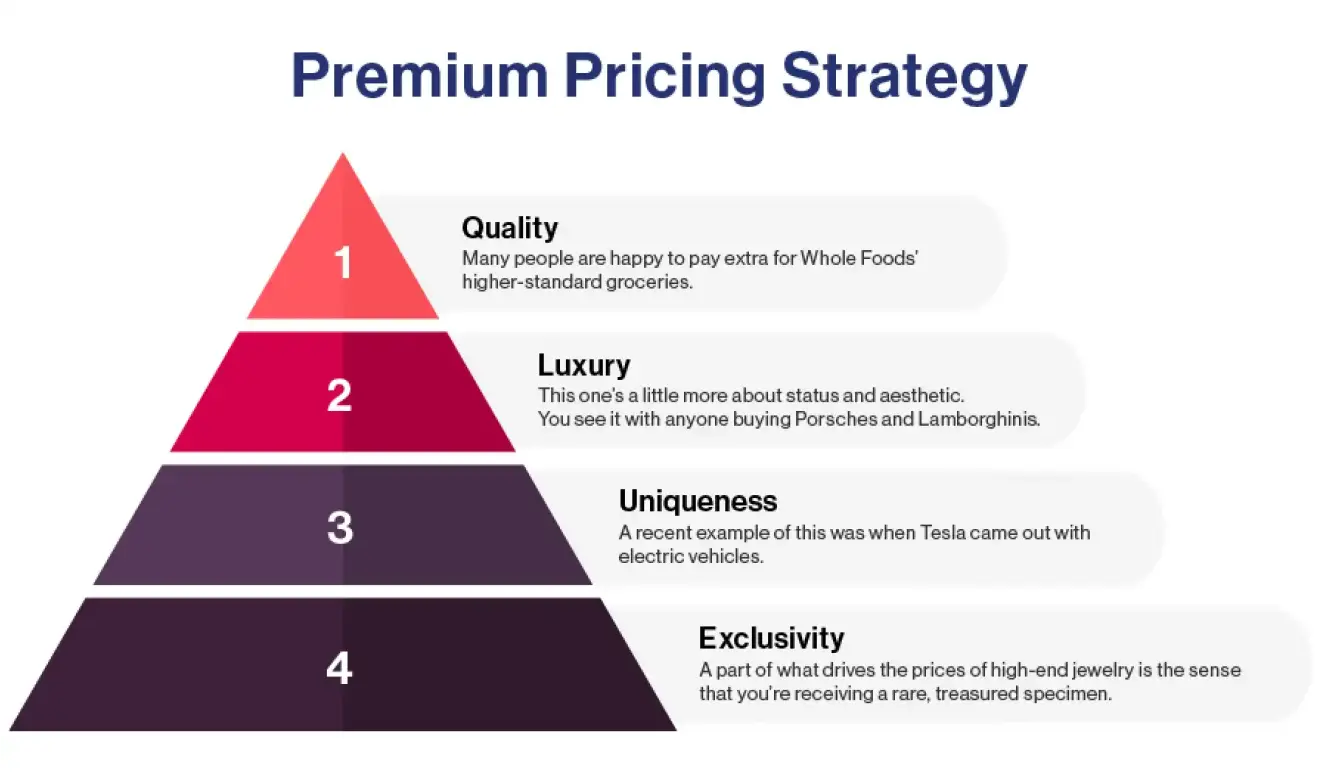The Value of a Well-Defined Pricing Strategy in Competitive Markets
The Value of a Well-Defined Pricing Strategy in Competitive Markets
Blog Article
Optimize Revenue With Proven Prices Strategy Techniques
Techniques such as value-based pricing, dynamic prices, and thorough market analysis can dramatically enhance a firm's financial performance. Comprehending customer assumption and leveraging data analytics for agile prices changes are crucial elements of this approach.
Understanding Consumer Assumption
Comprehending consumer assumption is critical for developing efficient pricing strategies. It influences how consumers examine an item's value, quality, and overall appearance. Businesses need to recognize that customers often base their desire to pay not exclusively on the item's intrinsic characteristics yet additionally on emotional factors, consisting of brand online reputation, social status, and viewed deficiency.

In addition, business should think about the duty of prices psychology, such as charm rates or rate anchoring, which can dramatically impact consumer behavior. Understanding these perceptions makes it possible for companies to mount their pricing approaches in a fashion that straightens with customer expectations while making best use of success.
Integrating client perception into rates approaches not just aids in establishing affordable prices however likewise cultivates brand loyalty, as consumers feel recognized and valued. Ultimately, a nuanced understanding of customer understanding can result in lasting income development and improved market positioning.
Analyzing Market Trends
To develop an efficient rates approach, analyzing market fads is necessary for services aiming to stay affordable. Comprehending the characteristics of market changes makes it possible for firms to make educated decisions concerning pricing adjustments, product launches, and resource allowance - Pricing Strategy. By keeping an eye on consumer behavior, economic signs, and market growths, services can identify patterns that educate their prices frameworks
Trick components to take into consideration when assessing market trends consist of need flexibility, seasonal changes, and emerging technologies. Demand elasticity helps organizations gauge just how rate changes might affect customer buying decisions. Seasonal trends can supply insights right into optimal pricing during optimal and off-peak periods, enabling calculated discounting or advertising prices. Furthermore, watching on technical developments can assist recognize possible hazards or chances that might influence prices methods.
Making use of data analytics tools can boost the accuracy of trend analysis, offering useful insights that promote active decision-making. Firms should additionally consider conducting routine market research to validate presumptions and adapt to advancing consumer preferences. By leveraging these understandings, organizations can not only enhance their prices methods yet likewise enhance their total market placement, ensuring long-lasting profitability and development.
Affordable Rates Approaches
An affordable prices method is vital for organizations intending to get an edge in a jampacked marketplace. By examining competitors' rates frameworks and market positioning, companies can purposefully set their rates to bring in consumers while maintaining earnings. This strategy needs a detailed understanding of both the affordable landscape and client perceptions of worth.
One effective technique is cost matching, where a business offers to beat a competitor or match's price. This strategy can boost consumer loyalty and motivate sales, specifically in price-sensitive markets. Additionally, penetration pricing can be utilized to capture market share by initially establishing costs lower than competitors, attracting customers to attempt the item and fostering brand awareness.
Furthermore, businesses can implement emotional pricing strategies, such as pricing products simply below a round number (e.g., $9.99 rather of $10 - Pricing Strategy.00) This find can develop the understanding of a much better offer, affecting consumer habits
Ultimately, an effective affordable pricing strategy stabilizes the need to continue to be appealing to customers while making certain that the rates version lines up with the business's general objectives. Regularly changing and reviewing prices in feedback to market changes and rival actions is crucial for continual success.
Value-Based Prices Strategies
Value-based rates methods concentrate on establishing prices largely based upon the perceived worth of a service or product to the consumer, rather than only on production prices or rival prices. This strategy calls for a deep understanding of client requirements, preferences, and the one-of-a-kind advantages that the product and services deals. By determining the details worth vehicle drivers that reverberate with clients, businesses can develop rates strategies that mirror real worth of their offerings.
To execute value-based prices effectively, business need to take part in detailed marketing research, including consumer surveys and focus groups, to collect understandings right into customer understandings. Additionally, services ought to segment their client base to tailor pricing methods that straighten with different worth assumptions throughout sections.
Communication plays a vital function in value-based rates; companies have hop over to these guys to verbalize the unique worth recommendation plainly to justify the rate point. Continuous assessment and change are crucial, as consumer understandings of worth may shift over time due to market dynamics or affordable actions. By prioritizing value in pricing methods, companies can enhance customer fulfillment, improve loyalty, and inevitably enhance earnings.
Dynamic Prices Models

Dynamic pricing leverages sophisticated formulas and information analytics to keep track of competitor prices, customer behavior, and supply degrees. By dynamically adjusting rates, services can maximize income, make the most of profit margins, and react swiftly to changes in the marketplace. Airline companies frequently employ this version to change ticket prices based on factors like remaining seats, time until separation, and competitor rates.
However, the execution of vibrant rates need to be come close to with caution. Transparent interaction with clients is necessary to keep trust fund and avoid assumptions of unfair rates methods. Additionally, organizations should guarantee that their prices algorithms are not excessively complicated or opaque, as this can lead to client discontentment.
Eventually, when implemented attentively, vibrant rates models can offer businesses with a significant competitive advantage, enabling them to capitalize on market possibilities while dealing with customer assumptions in a rapidly changing financial landscape.
Verdict

Techniques such as value-based pricing, dynamic prices, and comprehensive market evaluation can considerably improve a firm's financial efficiency. Seasonal fads can offer understandings into optimum pricing throughout height and off-peak periods, enabling for calculated discounting or promotional pricing.Dynamic prices leverages advanced formulas and information analytics to monitor competitor prices, client actions, and stock levels. By comprehending client understanding, evaluating market patterns, and using competitive prices methods, services can efficiently align their prices with customer assumptions. Furthermore, value-based rates and dynamic prices designs allow companies to react agilely to market fluctuations.
Report this page